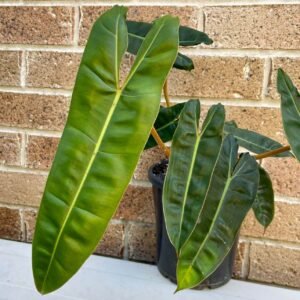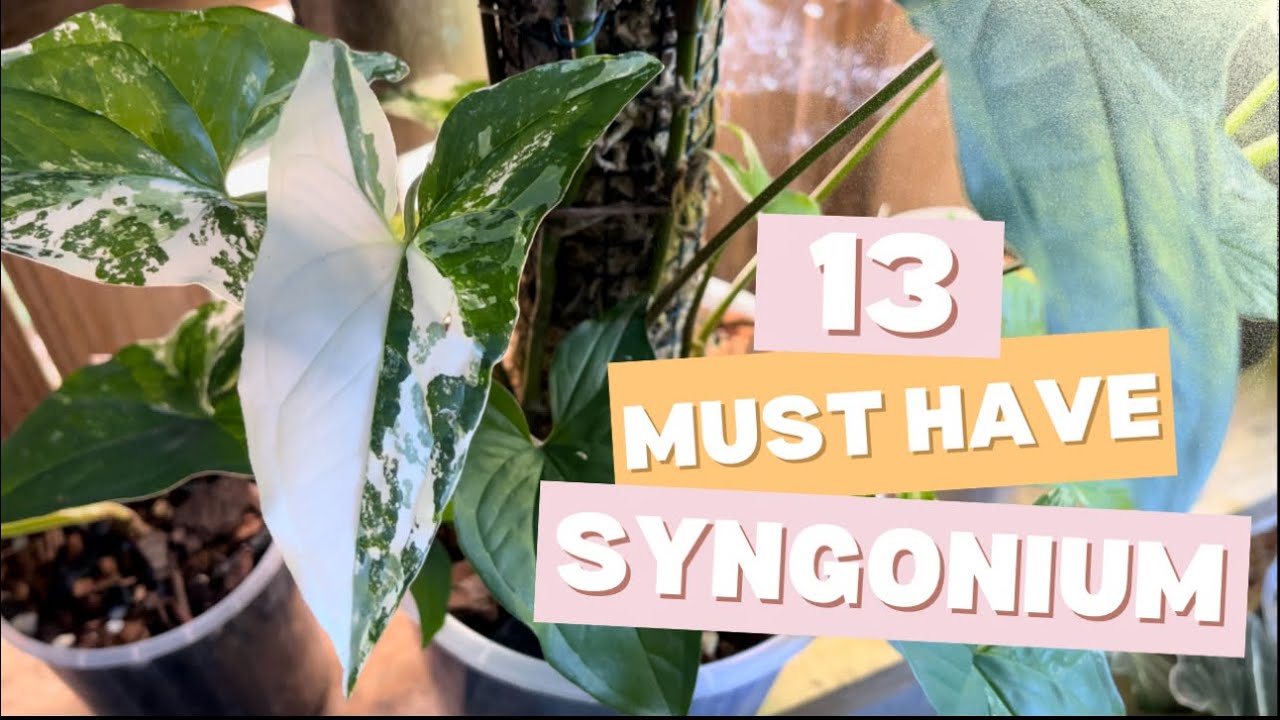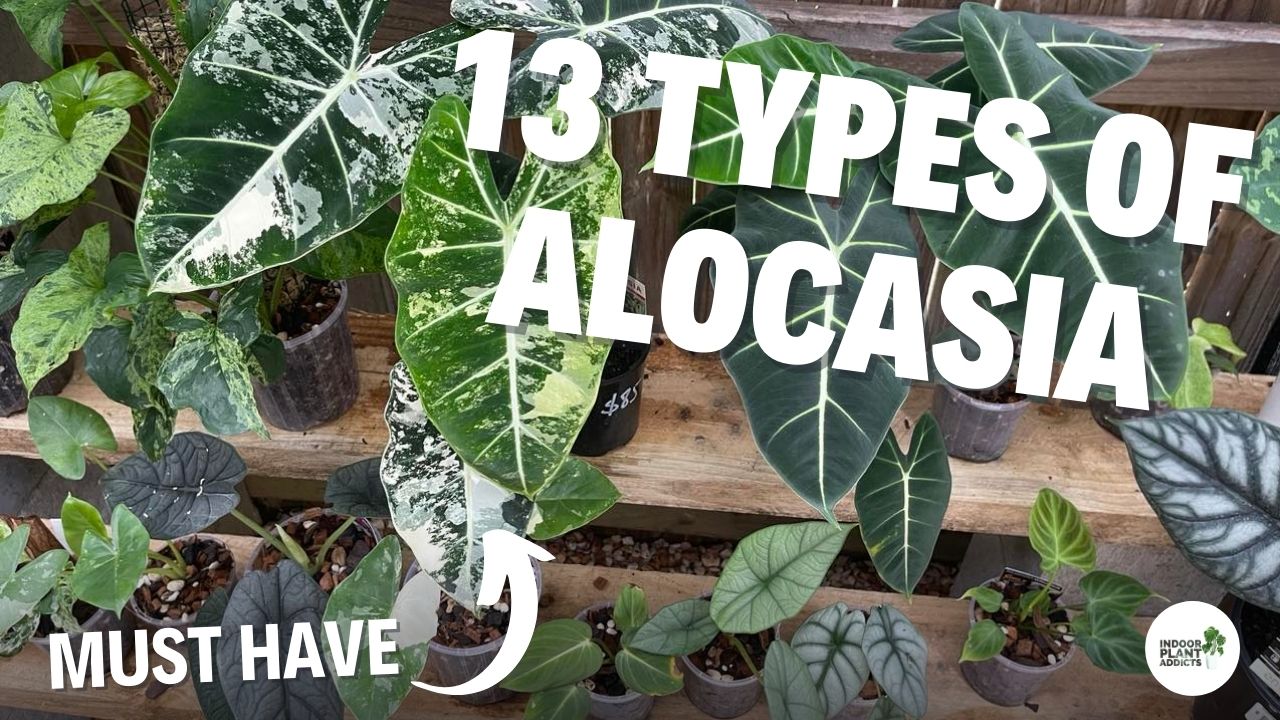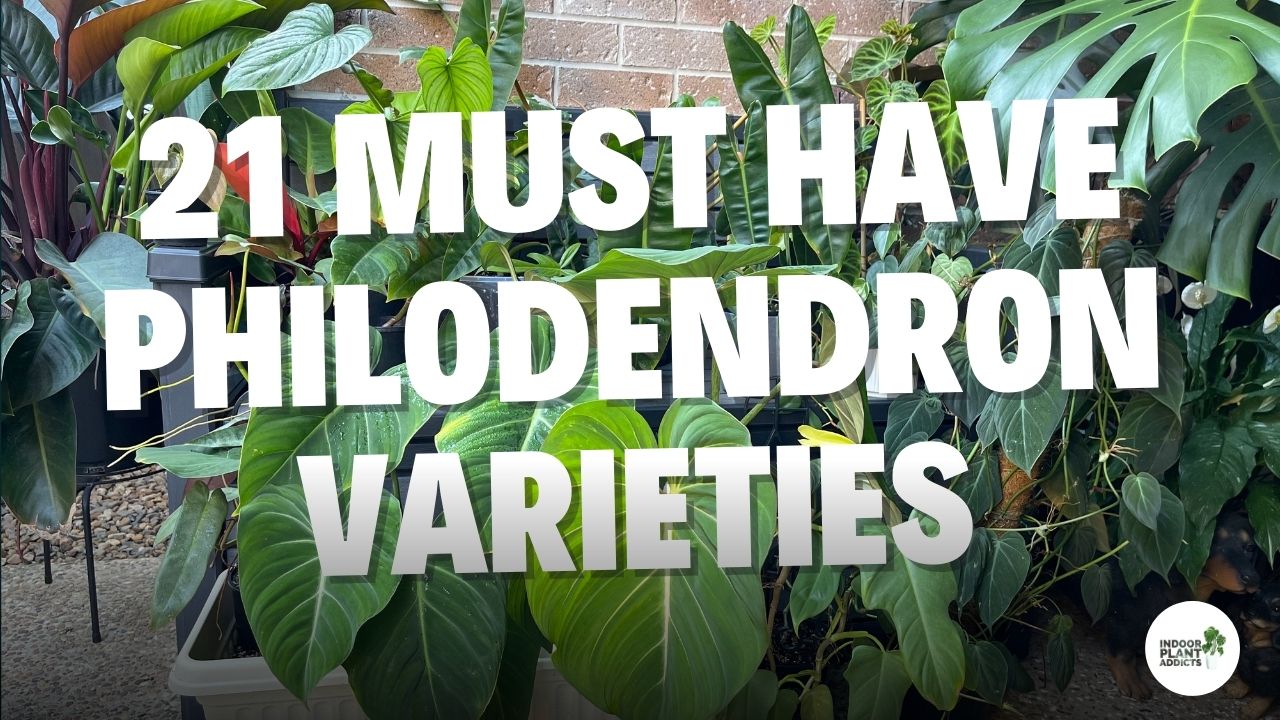Philodendron Billietiae
The Philodendron Billietiae is a beautiful but interesting plant to add to your collection. It has orangey/yellow petioles with big, long and ridged arrow shaped green leaves. This plant is quite easy to care for and doesn’t require much attention to thrive. Philodendron Billietiae is part of the Araceae family and native to Brazil, Guyana and French Guiana.

Philodendron Billietiae Quick Overview
| Full Size | Up to 3 feet |
| Light | Bright Indirect Light |
| Temperature | 65ºF-80ºF (18ºC-27ºC) |
| Humidity | Above 50% |
| Cost | $$ |
| Care Level | Easy Care |
| Toxicity | Toxic |
Size
The mature size of a Philodendron Billietiae is up to 3 feet in height and up to 8 inches in width. In the correct living conditions, a mature leaf can reach up to 3-5 feet in length and 7-10 inches in width. Adding a pole to the pot for the plant to climb will help support it and encourage those larger leaves.
Light Requirements
Philodendron Billietiae will grow best when in bright indirect lighting. You should try and avoid any direct sunlight as the harsh rays will burn the foliage. Leaves will become scorched and/or turn yellow as a sign of too much direct light. The best spot to grow this plant is near an east or north facing window. Philodendron Billietiae will have slow growth or stop growing as a result of lower light. Moving your plant to a spot where it receives brighter light will help keep your Philodendron Billietiae happy.
If your plant is housed in a spot where it receives direct sunlight, adding a blind or curtain to your window will help to defuse the harsh sunlight to avoid burning the plants foliage. Alternatively, if you can’t seem to find that perfect spot in your home, you can always use grow lights. Just like direct sunlight, if your plant is sitting too close to the grow lights, they will burn the foliage. Keeping a safe distance of at least 60cm between your plant and the light will avoid any trouble.
Temperature
The ideal temperature for growing Philodendron Billietiae is between 65ºF-80ºF (18ºC-27ºC). This plant likes warm climates and doesn’t tolerate cold temperatures. If the temperature drops below 55ºF (12ºC), your Philodendron Billietiae can get drooping white leaves as a result of cold shock. Keeping your plant in cold conditions for prolonged periods of time can cause plant death. During the cooler months, you should move your plant to a warmer spot in your home.
Humidity
Since this plant is native to tropical rainforests, it loves warmth and humid environments. Philodendron Billietiae will thrive when kept in an average-high (above 50%) humidity environment. Providing a high humidity for your plants will encourage bigger and healthier growth. There are a few thing you can do that can help bump up the humidity in your home. The things you can try are:
- Misting your plants
- Pebble trays
- Grouping plants together
- Humidifier
You can read more about increasing humidity in your home here.
Watering Requirements
Philodendron Billietiae likes to be moderately watered. This plant likes to have a slightly moist soil but you need to avoid over-watering. How often you need to water will change throughout the seasons when the temperature and amount of sunlight is changing. You should check the top few inches of the soil with your finger to feel if the soil is moist. If the soil is dry, it’s time to give your plant some water.
Although Philodendron Billietiae likes a slightly moist soil, you need to try and avoid over-watering. Excess water can cause the soil to become waterlogged and this can cause the roots to start rotting. Rotting roots don’t absorb any nutrients or water for the plant. This can cause fungus issues, pest problems and root-rot. Signs that you have over-watered your Philodendron Billietiae are drooping and yellowing leaves. Wilting leaves are a sign of under-watering.
Fertilizing requirements
You should fertilise your Philodendron Billietiae monthly during Spring and Summer. You can cut back on fertilising during the cooler months (Winter and Autumn) when the plant isn’t actively growing. Applying fertiliser when your plants aren’t actively using all the nutrients in the soil can cause salt build up and root burn. Fertilising your plants will give them the essential nutrients they need for promoting and maintaining new and healthy growth.
The best fertiliser to use for Philodendron Billietiae would be a balanced all purpose fertiliser diluted to half strength. Another great option and an alternative to a liquid fertiliser is a slow release fertiliser. Slow release fertilisers will release nutrients over months at a time, meaning you won’t need to fertilise as often. You should ensure that the fertiliser contains all the macronutrients including Nitrogen, Phosphorous and Potassium.
Another thing you need to be cautious of when fertilising your houseplants is over-fertilising. A sign that you’ve over-fertilised your Philodendron Billietiae is curling leaf tips. If you think you’ve over-fertilised your plant, you can either change the soil or rinse the fertiliser out. You will notice a change in the water colour once the fertiliser has been completely rinsed out.
For more information on fertilising houseplants click here.
Soil Requirements
Philodendron Billietiae will grow best when in a rich, moist and well draining soil. To achieve a well draining soil, you can use orchid bark, perlite, peat and charcoal mixed together to create drainage and aeration. Air flow is important in potting soil as it allows the plants roots to breath. Not having enough oxygen to the roots can cause them to start rotting.
You can also add other organic materials like coco coir, mulch chunks and coconut husk to the soil to help restrain moisture. Philodendron Billietiae like to be kept in a slightly moist soil so it’s important to use ingredients that will help hold moisture but not make the soil soggy. Adding garden compost and mulch can add more richness to the soil.
Diseases & Pests
Philodendron Billietiae tend to be pretty pest free depending on the living environment. However, there are some common pests that you may encounter. The common pests your may encounter on your Philodendron Billietiae are Aphids and Mealybugs. The common disease you may encounter is Root-rot. For more information on identifying and treating common houseplant pests click here.
The best thing you can do when it comes to pests on houseplants is to try and avoid any pest infestations from starting. There are a few things you can do that will assist in preventing any pest infestations and these things are:
- Checking new plants for pests or isolating new plants for up to a week.
- Check your plants every few days for pests.
- Trim off any dead or dying leaves.
- Wipe down leaves if you notice them getting dusty.
- Keeping your plants healthy. A healthy plant will be able to handle an infestation better than those that aren’t as happy.
- Isolate any plants that have pests.
Following this will assist in keeping pests away as well as catch them early on before any severe infestations are able to start. Keeping plants healthy and in the correct living environments can help to deter any pests from invading your plants.
Toxicity
Philodendron Billietiae contains calcium oxalate crystals which are toxic to both humans and pets. If any part of the plant is ingested, symptoms may include swelling of the oesophagus, GI tract and mouth. If ingested by pets, the symptoms may include vomiting, lack of appetite, drooling and pawing at the mouth.



